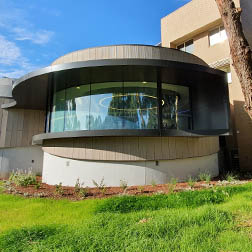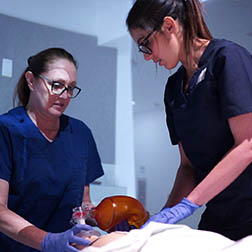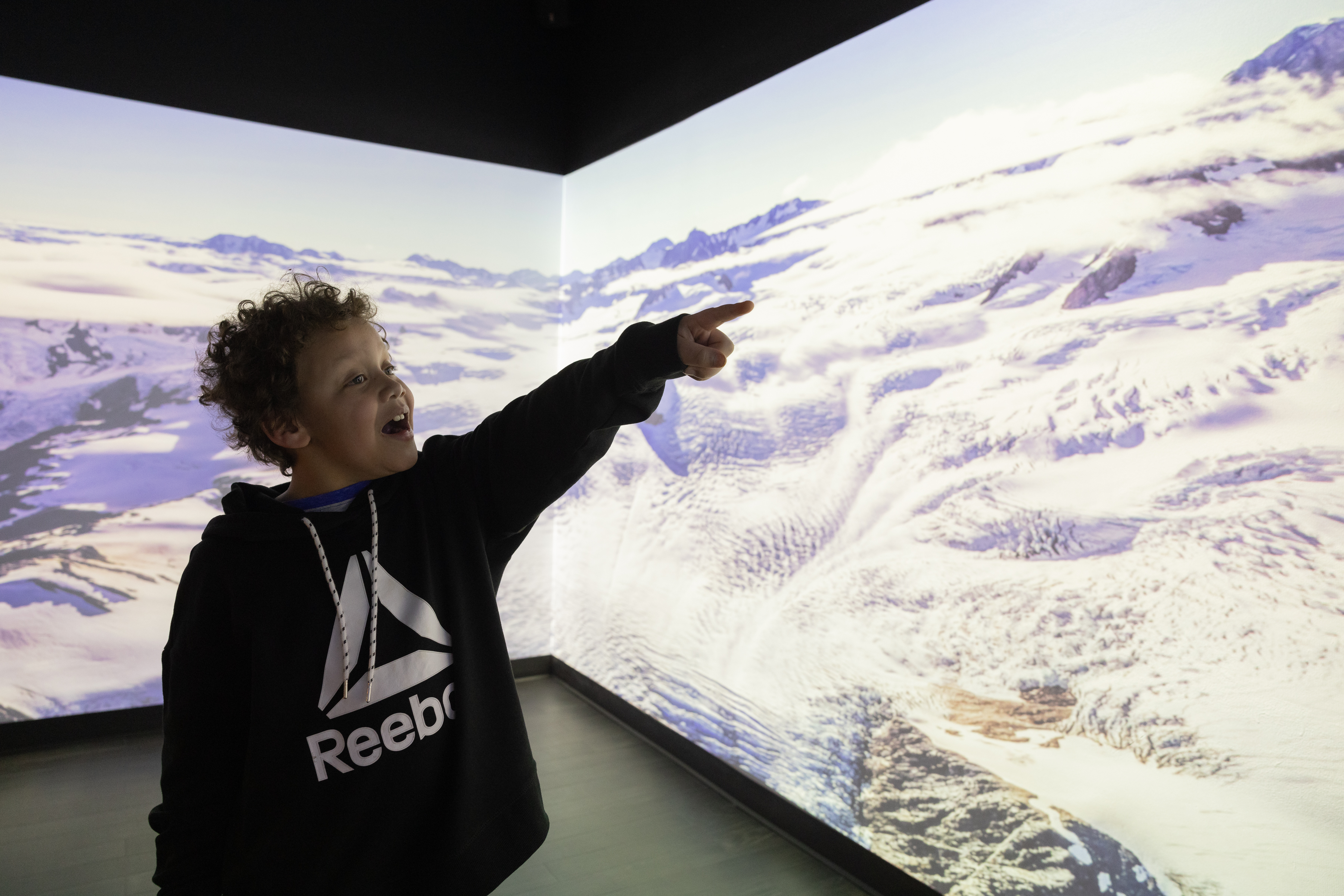


When students took part in a unique project involving immersive storytelling for special eduation:
82% of participants were motivated to use these pedagogies in their own teaching
Igloo worked with the University of Newcastle to install a 7-metre immersive cylinder which uses 6 E-Vision 5100 projectors by Digital Projection. The system is powered by an Igloo Immersive Media Player (IMPIII), which is ideal for displaying and layering the diverse content types used at the University of Newcastle.
One of the things that makes Igloo perfect for simulation, training, and teaching is that the Igloo software works, out-of-the-box, with almost any immersive or traditional content. Staff and students at Newcastle use Igloo’s native integrations for YouTube 360, Matterport and Google StreetView to access loads of 360° content freely available on the web. And they’ve been using 360° cameras and presentation tools to create their own bespoke learning content.
Since its installation in June 2022, the School of Education has used the Igloo to simulate different classroom environments, deliver training and explore the possibilities of immersive learning. And the space has even featured in a research paper on “Technological Innovations in Initial Teacher Education".
Here are just some of the ways the space is being used:
Dupin is a unique project that has been developed in collaboration between Ray “Bud” Kelly (artist) and Tess Rendoth (Lecturer). The name Dupin is a Gathang word for "having a natural sense of connection to the world and who you are in it."
The project uses the Igloo immersive space to reimagine an aboriginal narrative as a 15-minute sensory experience using film, animation, smells, tastes, temperature manipulation, music, textures and movement (you can watch an excerpt of the opening sequence above).
Dupin has been developed in a way that centralises and celebrates indigenous knowledges and ways of being. And the Igloo has been a key piece of technology that has helped staff at the University develop working protocols for collaborating with indigenous experts.
“With the Igloo I can create a space where students feel safer to be themselves, see things from nuanced and opposing angles, and ask questions they usually wouldn’t in what can be a very complex environment of discussion around students with disabilities, education and ethical dilemmas.”
Tess Rendoth
Lecturer at the School of Education
The Dupin project is used in the Planning for Teaching in Special Education course, and is also open to other staff members, including human geographers, library staff, indigenous strategy team, speech pathologists, occupational therapy students.
Of the 170 people that took part in the project:
“This was a beautiful and unique experience for me. As someone who is studying to be an educator for students with disabilities, it has allowed me to immerse myself to see how those students who are challenged learn, engage and process things differently.”
Student
“This has deepened my professional learning and given great insights to link my lessons for students with diverse learning needs.”
Student
“Working with Igloo has been great, in the two years I’ve had to do maybe three phone calls and the responsiveness and the support has been really good.”
Tess Rendoth
Lecturer at the School of Education





